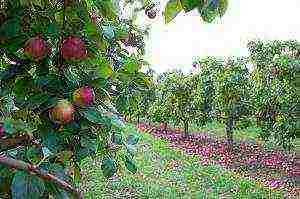Content [show]
Watercress is one of the oldest herbaceous plants, which is more than 2 thousand years old. Its popularity has been at its height for such a long time for two reasons: first - unpretentiousness in cultivation and care; the second is the richest vitamin complex that it possesses. In winter, growing watercress on the window makes it possible to compensate for the lack of vitamins in all family members. Rapid growth is another indisputable advantage of such a useful plant.
The history of growing watercress
Watercress has a long history. The Persians were the first to use it as food, spreading the plant throughout Rome, Egypt and Ancient Greece. Ancient healers believed that watercress leaves bring dying people back to life, and patients suffering from a serious lingering illness recover faster, completely restoring their health. Modern doctors and scientists agree with their colleagues from antiquity: watercress really has such a wide range of useful substances that its regular use in food significantly increases immunity.

Watercress is good not only fresh, but also as a seasoning for dishes
In Egypt, watercress was a favorite spice of the pharaohs, and the Persians began to use it for food long before the appearance of bread.
The first Europeans to appreciate watercress were the French and the Germans (8th century). It is thanks to them that this plant has become popular throughout Europe. Now watercress is grown for all 12 months in different countries of the world, not only on an industrial scale, but also in domestic conditions - on the windowsill.

Watercress on the windowsill is simple and practical
Watercress varieties
In total, there are three varieties of watercress: whole-leaved, curly, sowing. They differ from each other in terms of ripening, leaf shape and taste.

Varieties of watercress differ from each other in the shape of the leaves
Whole leaf watercress is ideal for outdoor cultivation. These are late-ripening varieties with a large horizontal rosette.
Table: varietal form Whole-leaved

Whole leaf watercress has a zesty spicy flavor
Curly watercress is an early maturing plant that has jagged leaves. Cultivars belonging to this cultivar form are ideal for growing winter greens indoors.
Table: cultivar Kudryavy
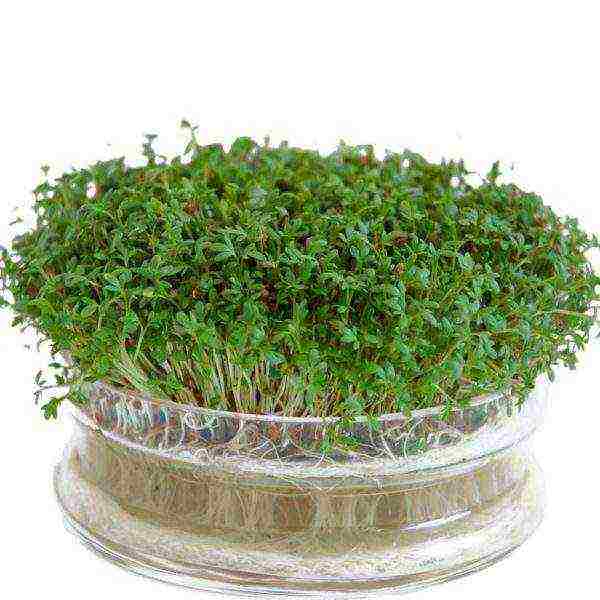
Curly Watercress Grows Fast and Has a Sharp Mustard Flavor
The leaf-shaped seed watercress is a cross between whole-leafed and curly.The varieties have a large rosette, half-raised, and the shape of the leaves is weakly dissected.
Table: Sowing cultivar
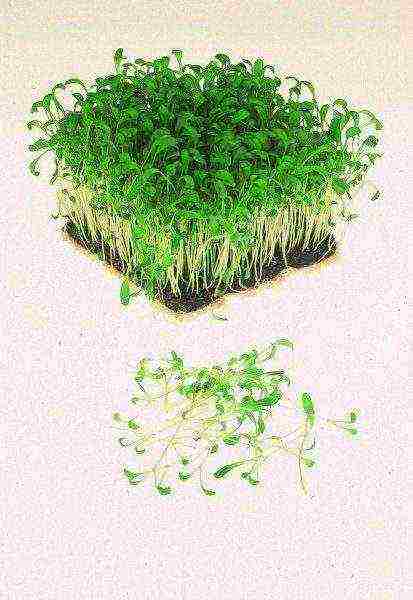
Sowing watercress is suitable for growing on a windowsill
Landing rules
Watercress can be successfully grown not only in the beds, but also in a bowl on the window. Planting, growing and caring for it is so easy that any independent child can handle it.
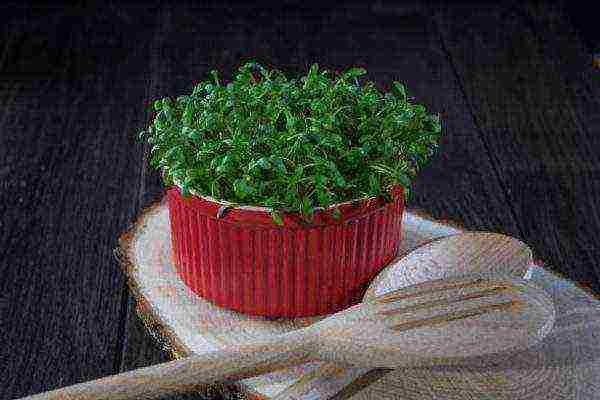
Watercress on the windowsill is not only useful, but also beautiful
Soil selection
Watercress is one of the most unpretentious plants that grows literally in any soil and even without it. “Window-gardeners” grow these mouth-watering greens on ordinary medical cotton wool or food paper napkins. Experiments were carried out on growing plants in different conditions:
- land with water;
- cotton wool;
- just water;
- cotton wool poured with water and sprinkled with earth.
Lettuce grows best in the last planting mix.
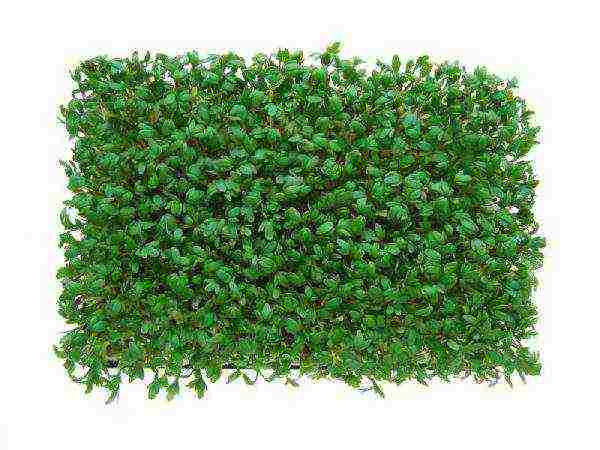
Watercress grows in any soil and even without it
Lettuce grows well in ordinary, moderately moist soil, but the soil must be purchased at gardening stores. If you take the land from the garden, there is a high probability that it may contain eggs of a cruciferous flea - thunderstorms of all plants belonging to the cabbage family. And watercress also belongs to it.
If you plan to sow this plant in the garden, then choose the beds where potatoes, carrots, onions, garlic and other root vegetables grew. You cannot sow watercress after any cabbage crops.
Preparing seeds for planting
Planting any plant begins not only with preparing the soil, but also with the seeds. In watercress, they are quite large, in appearance they are similar to mustard, but oblong.

Watercress seeds are large and easy to sow
In order for the seeds of watercress to quickly swell and hatch, they must be placed in any small container, filled with water, which should barely cover the planting material. They are left in this state for 11-15 hours.
When is the best time to sow watercress
In an apartment, the plant can be grown almost all year round. The best time for this is the cold months, since watercress is a cold-loving plant, for which the optimum temperature is + 15 ° С... It is difficult to provide such conditions in summer. And at higher temperatures, the seedlings quickly stretch out, turn pale and lodge.
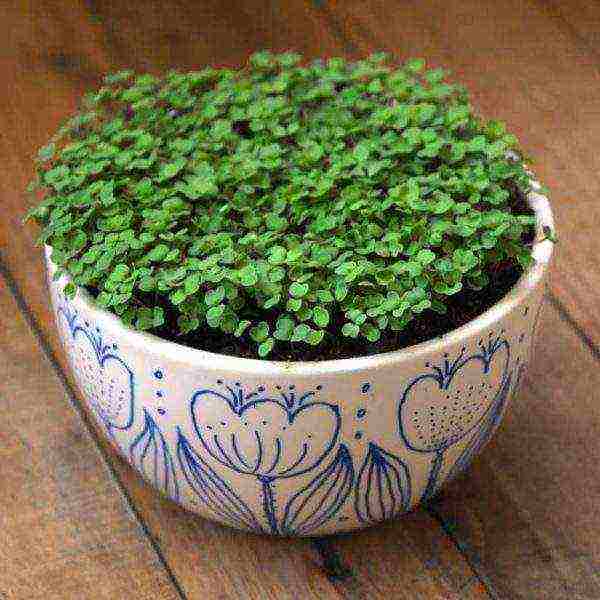
Watercress is a cold-loving plant and feels great at a temperature of + 15 ° С
In open ground, seeds are sown either before winter or in early spring, as soon as the soil has thawed. Even the first, most tender shoots of watercress are not afraid of frosts down to -5 ° C. He, along with parsley, rises first in the garden. It is a fast growing crop that outgrows and shoots out (throws out color). Therefore, in order to provide yourself with constantly fresh watercress, it is planted with regular sowing with a difference of two weeks.

Watercress is one of the first to appear in the garden
How to grow watercress
Growing watercress is the simplest and most cumbersome task. With a minimum of effort, the gardener will be able to feast on pleasant spicy greens all year round.
Growing on a windowsill in the ground
The traditional cultivation of watercress in a flower pot is most common among lovers of this plant. Sowing seeds can be started from the second half of September. By this period, the sultry heat goes away and does not threaten the watercress with quick stretching and lodging.

On the 12-14th day, fresh herbs can be used as food
An important point: watercress does not like direct sunlight, so a place to grow it should be found on the north side of the house. Best of all is a glazed balcony on the north side. Here, seedlings will feel good at all stages of development, right up to harvest.
The scheme of planting watercress in the ground:
- It is better to buy a soil mixture ready-made in a gardening store.For watercress, ordinary soil is suitable for growing seedlings. In such a soil there are no weed seeds, it is nutritious and contains everything necessary for the active development of the plant.
- The seeds are poured with water so that it barely covers them, and left for 11 hours.
- Soil mixture for seedlings is poured into a pot with a drainage hole, slightly moisten the soil (if necessary), then add a few tablespoons of water to the container with seeds.

When sowing watercress in the ground, first moisten the soil from a spray bottle, then scatter the seeds over the surface
- Scoop up the seeds with a spoon and literally "pour" them onto the surface of the soil. In this way, you can achieve uniform sowing of moist seeds and additionally moisten the soil.
- Next, the seeds are sprinkled with 0.5 cm of soil, sprayed again from a spray bottle and covered with a black or transparent film for a day.
A day later, sprouts will appear that do not require further shelter. Watercress grows literally before our eyes, but with regular watering. On the 12th or 14th day, the sprouts can already be cut with a knife or scissors and used for food. The seeds do not have to be soaked in water, you can sow them dry, since they germinate well, but in this case, the appearance of sprouts will be postponed by about a day.
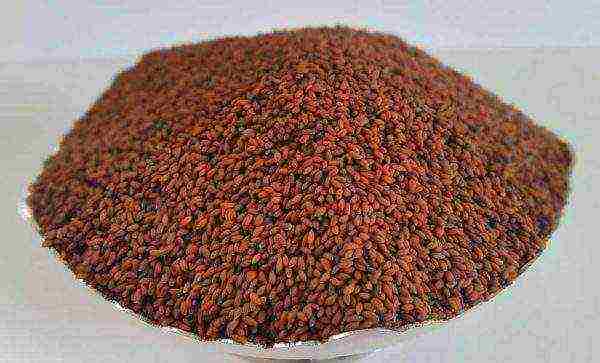
Soaking watercress seeds makes it possible to see the sprouts the very next day after sowing
Sowing watercress in any of the ways every 7-10 days, you get a continuous green conveyor with the most delicate and piquant "vitamin bomb".
Growing on a windowsill without land
Nowadays, the cultivation of watercress without land has become very popular. The soil for planting perfectly replaces coconut fiber, cotton wool, napkins, sawdust.
Video: growing watercress without land
The main condition is a constantly moist base. If the seeds are not soaked, then they will sprout unevenly. The best varieties for planting both in a pot with soil and in the following substrates: Azhur, Zabava, Curchavy, Dansky.
The scheme of planting watercress in a bowl without soil:
- In a wide container, at least 5 centimeters in height, place cotton wool (coconut fiber, sawdust or napkins) along its entire length and pour water over it so that the substrate is very wet - as if it were dipped in water and not wrung out. In this case, thin plastic containers from confectionery are well suited.
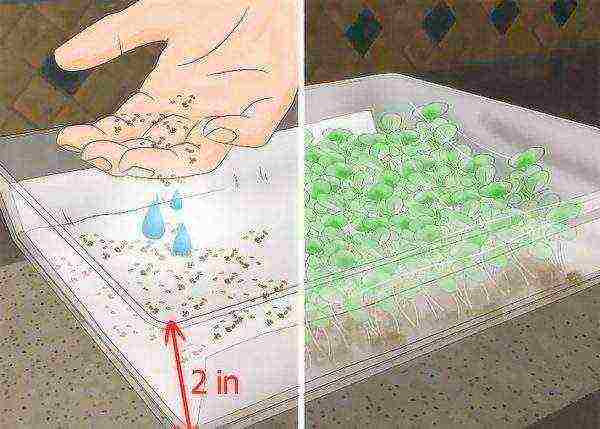
The substrate must be moistened so that the water does not stand above the surface.
- Take a tablespoon of seeds with water and evenly distribute them by "watering" over the entire surface of cotton wool or other selected substrate.
- Cover with a container lid or stretch cling film until sprouts appear.
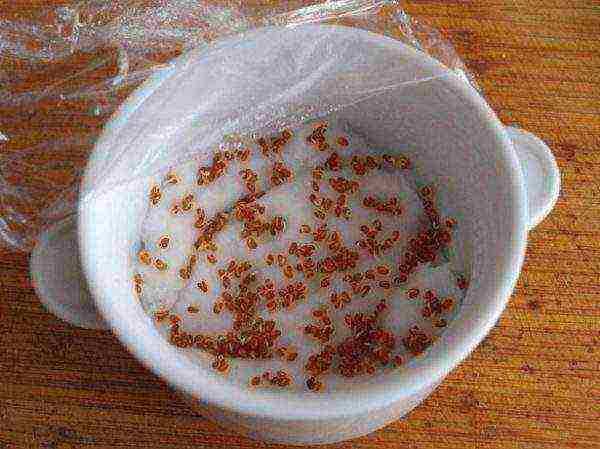
The seed dish must be covered with a foil to create a microclimate
- Regulate the humidity in the container by watering, but do not allow the water level to be higher than cotton wool.
- After 2 weeks, watercress can be used fresh or in cooking. Young sprouts are used for food, on which the first real leaf has appeared. By this time, the shoots have reached 10 cm in length. Store the cut watercress only in the refrigerator and no more than two days, otherwise its color will become pale and the taste will be unpleasantly bitter.
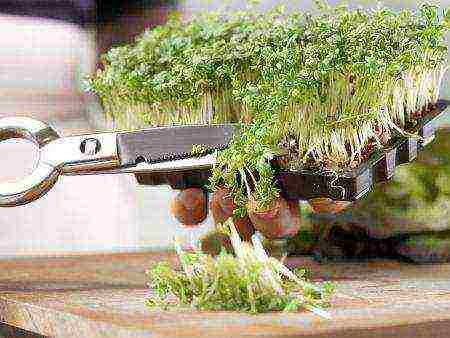
It is better to collect the "window-sill" crop of watercress with scissors.
Outdoor cultivation
Gardeners with a plot of land can sow watercress in late autumn before the onset of stable frosts. In this case, in the spring, with the first thaw, the watercress will immediately begin to grow with strong and friendly shoots. This greenery is one of the first to appear, since it is not afraid of cold weather and frosty nights.

The watercress in the garden grows just as quickly. like on the windowsill
In October, on a site where any types of cabbage have not previously grown, cut beds 1 cm deep and sow seeds evenly. Then they rake the soil with a rake. With the arrival of spring, the first crop is harvested and the next one is sown immediately. More than twenty days after the emergence of shoots, watercress should not be left in the garden bed, since it outgrows and begins to shoot.
If you are planning to harvest your watercress seeds, then leave one crop alone and leave the seeds to ripen. When the seed boxes are formed, the plants are uprooted, dried in a ventilated room, and then tied up, stretching a cloth or oilcloth, where fully ripe seeds will fall out.
The planting conveyor can be observed as long as a stable temperature of + 25 ° C remains outside and provided that the soil is kept in a constant wet state.
Growing in a greenhouse
On the backyard, the cultivation of watercress in a greenhouse is not much different from planting in open ground. An important nuance for greenhouse plantings is that they need to be regularly ventilated. By and large, growing watercress in a greenhouse is pointless, since it grows well in the open field with the appearance of the first spring sun rays.
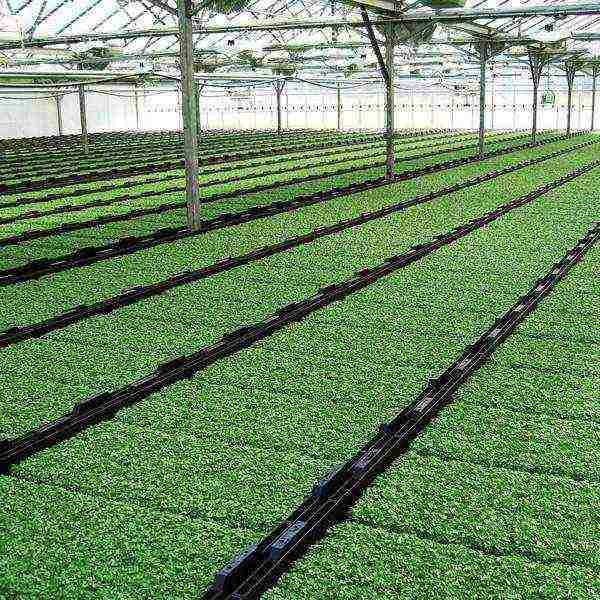
Growing watercress in a greenhouse is rational in an industrial environment
The nuances of plant care
The main rules for caring for watercress: regular watering and a temperature of no more than 15 ° C. From the beginning of germination to harvesting, very little time passes - 2-3 weeks, for this reason, watercress simply does not have time to infect any diseases or pests.
Video: why watercress falls
Top dressing
Watercress is so unpretentious that it doesn't need any feeding. If it is able to actively and efficiently grow on damp cotton wool even without adding soil, then you should not once again add any fertilizers to the garden bed, especially artificial ones. It is best to spill the soil with them (for open ground) before sowing the seeds, and not during the active growth of the plant. The following organic fertilizers are suitable for this: Biohumus, Biocompost, Gumi, Compostin.

In a transparent container, it is easy to control the growth of watercress and the moisture of the soil under it
Watering
Watering is an important component of watercress farming techniques. The soil should always be relatively moist. And the landings on the windowsill must be monitored more carefully, especially if the battery is heating below. It is also impossible to pour soil in the garden or a bowl with a substrate..
Regularity, consistency, control are the main rules of watering, under which your watercress will develop well.
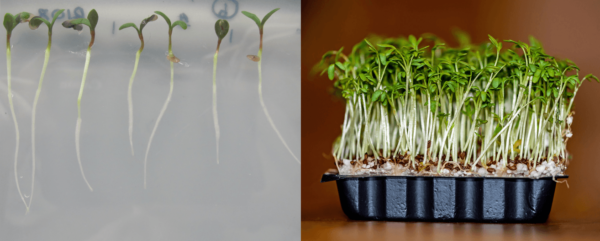
Healthy watercress sprouts without fertilizers are its hallmark
Pest control
Watercress can only infect one pest - the cruciferous flea. If this happens, and this is a rare occurrence, in hot weather it is necessary to pollinate the plants with tobacco dust. In addition, the cruciferous flea is very afraid of low temperatures, so the watercress can be sprayed with ice water - the pest will disappear.
Chemicals, the action of which is aimed at long-term control of insects, is dangerous to use due to the short growing season of watercress. It is difficult to wash off insecticides from the crop, especially from such a delicate plant. As a result, we will receive not benefit from it, but only harm.
Gardeners growing watercress on the windowsill will never encounter a cruciferous flea, unless, of course, the backyard land was used.
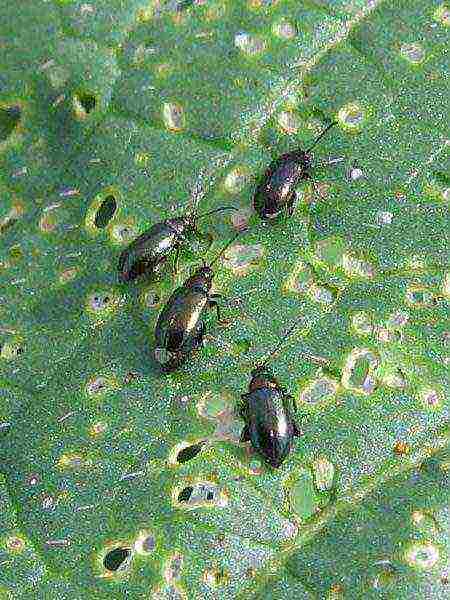
The cruciferous flea is the only pest of watercress
Gardeners reviews
Watercress is often referred to as the "vitamin bomb". This amazing plant is easy to grow in your window during the winter months. 14 days after planting, you can already use healthy sprouts with a pleasant mustard taste for food. However, excessive consumption of lettuce leads to headaches and insomnia. Experts say that a single plant intake should not exceed 15 grams. With a moderate addition of watercress to the diet, winter beriberi can be easily avoided. ...
My name is Yelena. Working with texts is probably my calling, and working in the garden and vegetable garden is a balm for the soul. Rate the article:
(0 votes, average: 0 out of 5)
Watercress (or bedbug) was brought to European territory from Egypt and the countries of the Middle East. Today, there are over 200 species of this herbaceous annual growing around the world with a refreshing taste.
Early spring, when hot days have not yet come into their own, is considered the ideal time for planting watercress. It is growing from seeds in the open field that will be the key to obtaining a tasty and mineral-rich green leafy vegetable.
Properties of watercress
Watercress is considered one of the most mineral-rich leafy vegetables. It has properties such as:
- increased immunity;
- blockade of cancer cells;
- thyroid support.
And this is not a complete list of the benefits of eating a delicious eco product.
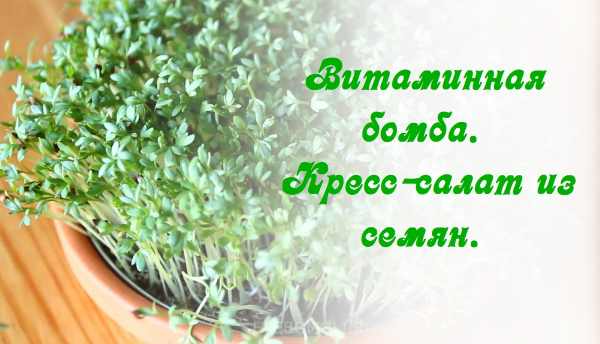
Research has shown that undeniable health benefits come from high levels of vitamins and minerals. The antioxidant properties of nutritious cress prevent the formation of free radicals that are unwanted by the body. Among interesting and proven facts, it is worth noting that watercress contains:
- more vitamin C than an orange;
- more calcium than milk;
- more iron than spinach.
The content of vitamin A, vitamin B6 and B12, iron, magnesium, phosphorus, calcium - everything that the body needs.
Benefit for health:
- Breast Cancer Prevention;
- Improves the cardiovascular system;
- Improves bone strength;
- Antidepressant;
- Improves brain health.
These undeniable health moments begin with just one serving of these greens.
The best varieties of watercress
The common name for watercress combines three types of salad. Exist:
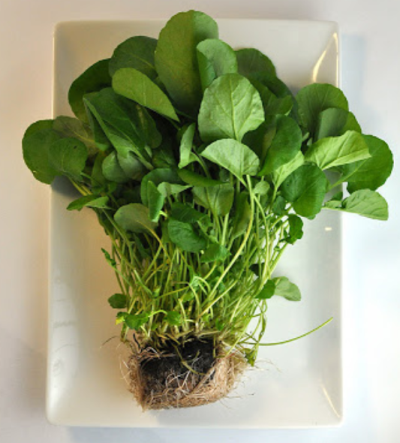
- Whole-leaved - can be both late and early ripening. With the first shoots, you can taste the first crop. Taking into account the cold resistance of the variety, cultivation is permissible all year round. It takes root well on a windowsill or on a balcony.
- Curly - "cut" of the leaves served as a designation of a variety of medium ripeness.
- Sowing - refers to varieties with fast ripening.
Even experienced gardeners find it difficult to distinguish the seeds of different types of lettuce. Taking into account the photo on the package, it is not difficult to buy and plant a watercress. But only after the emergence of seedlings, the characteristic forms inherent in a particular variety will be visible.
Among the best representatives of ultra-early ripening varieties, the following are distinguished.
Ducat
Pleasant tart taste of tender and juicy leaves. Ripens before eating in 2-3 weeks.
Dansky
Get spicy, pungent greens quickly in early spring. The variety is distinguished by excellent seedlings.
Spring
 The early ripening of the variety, the ability to grow in open areas and at home, instantly made it popular and in demand. Cold tolerant, the spring variety reaches maturity by the third week after germination. Yield frequency - up to 5 cycles per season. At the same time, on the windowsill in the apartment, it is enough to put a container with a 5-8 cm layer of soil. The rosette of large flat leaves with a delicate, juicy-bitter taste reaches 20 cm in diameter. It is convenient to use it as an independent ingredient for fish or meat dishes.
The early ripening of the variety, the ability to grow in open areas and at home, instantly made it popular and in demand. Cold tolerant, the spring variety reaches maturity by the third week after germination. Yield frequency - up to 5 cycles per season. At the same time, on the windowsill in the apartment, it is enough to put a container with a 5-8 cm layer of soil. The rosette of large flat leaves with a delicate, juicy-bitter taste reaches 20 cm in diameter. It is convenient to use it as an independent ingredient for fish or meat dishes.
Growing watercress outdoors
Spring sowing of watercress in the open field is permissible from April to the second half of May. When thinking about how to plant this greenery in an open area, make sure that there is no snow at all.
Advice! Following simple recommendations, within 15-20 days after planting, you can enjoy the exquisite tangy taste of cress.
A shade-loving plant produces a good harvest in areas hidden from bright light.Places where the sun's rays appear in the morning and afternoon are ideal for planting unpretentious spices.
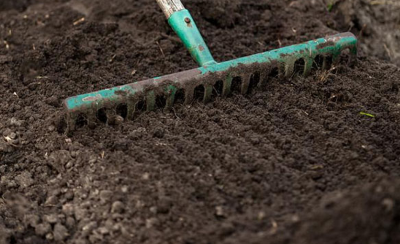 Preparing a site for planting watercress includes loosening and mandatory fertilizing of the soil with minerals and compost. Removing weed spores will save you from a lot of poorly eliminated problems in the future. These uncomplicated growing conditions will lead to a decent harvest.
Preparing a site for planting watercress includes loosening and mandatory fertilizing of the soil with minerals and compost. Removing weed spores will save you from a lot of poorly eliminated problems in the future. These uncomplicated growing conditions will lead to a decent harvest.
It is possible to sow watercress in open ground not only in early spring, but also before winter. In this case, it is important to carry out sowing work under the very frost - in order to avoid premature emergence of sprouts.
Growing watercress is acceptable both in single beds and as a catch crop. Lettuce will grow well in a solid carpet, but the method will require more careful maintenance.
 When planning planting, you should carefully consider the distance between the grown plants. It should not be less than 10 cm. Among the factors that have a detrimental effect on the future harvest, thickening takes the first positions. This will be prevented by thinning as needed.
When planning planting, you should carefully consider the distance between the grown plants. It should not be less than 10 cm. Among the factors that have a detrimental effect on the future harvest, thickening takes the first positions. This will be prevented by thinning as needed.
It's important to know! Sowing in open ground in early spring is carried out at a depth of 10 mm. Winter plantings - up to 15 mm.
- On average, the seed from the standard package is sufficient for sowing 2 square meters of the selected area.
- The April planting of green cress begins when the daytime temperature is within 5 ° C for 3-5 days.
- Seeds sown on fertilized soil are covered with a second layer of soil on top. Its height should not exceed 5 mm.
- Correctly performed cultivation already on the 4th day will lead to the appearance of sprouts, after another 14-16 days the greens will be ready for eating.
- The most suitable conditions for the growth of culture are 15-18 ° C.
A steady rise in daytime temperatures will result in shooing, which harms the palatability of the watercress.
Advice! Depending on the climate, from June to the second half of August, it is advisable to abandon the sowing of crops.
Watercress Salad Care
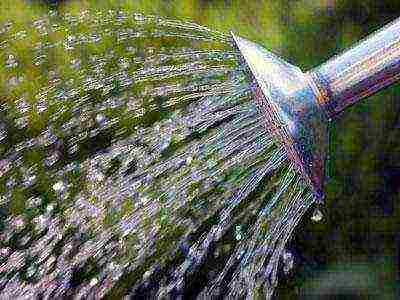 Timely watering is the most necessary condition for full, proper care of the plant. Other factors aside, it is important to remember that water is the watercress medium. Lack of moisture instantly affects the taste of the green leaf. It goes into the arrow and becomes bitter, almost unusable.
Timely watering is the most necessary condition for full, proper care of the plant. Other factors aside, it is important to remember that water is the watercress medium. Lack of moisture instantly affects the taste of the green leaf. It goes into the arrow and becomes bitter, almost unusable.
On hot days, watering is carried out up to twice a day. If the weather is rainy, one watering every three days is enough.
If, for some reason, when preparing the site for planting, the soil was not fertilized, you should pay attention to top dressing. It should be liquid, balanced, low concentration. It is worth adding in the minimum amount, extremely carefully. Taking into account the rapid maturation and achievement of nutritional value, the greens may not have time to process the nitrates added to the soil.
The remaining procedures are reduced to infrequent loosening and removal of weeds. Loosening will help to provide an additional flow of air and nutrients to the plant roots.
Agrotechnics of watercress on the windowsill
Watercress is perfectly adapted to growing conditions on a windowsill in a residential apartment, and all year round.
The nice thing about growing watercress at home is that it doesn't need soil. A sponge, a paper towel, and even a piece of cotton wool will serve as a good foundation for seeds.
Watch the video! Growing watercress on a windowsill
Any dish - a mug, bowl, deep plate or container, will be a good container for germinating seeds. Procedure:
- Select a tray and fill it with a substrate, the height ranges from 2-2.5 cm.In the presence of peat or clay soil, the layer must be laid out up to 4 cm.
- Soak lightly with water.
- Spread the seeds evenly and carefully. Press them gently into the ground. Pour one more time with settled tap water.
- Cover the pallet and place in a warm place.
After two days, as a rule, sprouts begin to emerge. The film is removed, and further procedures consist in watering and spraying from a spray bottle. For uniform growth, you need to turn the container on the windowsill daily.
Harvest
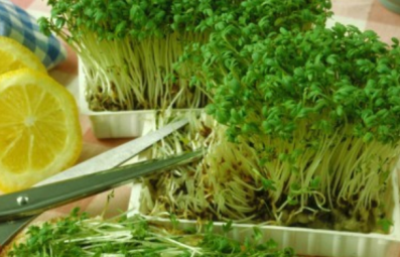 Practically without touching the stems, carefully cut off the layer of leaves with scissors. It is ideal to cut the amount you need in your food at the moment. Washed and well-dried leaves can be stored in the vegetable drawer of the refrigerator in a bag for up to three days.
Practically without touching the stems, carefully cut off the layer of leaves with scissors. It is ideal to cut the amount you need in your food at the moment. Washed and well-dried leaves can be stored in the vegetable drawer of the refrigerator in a bag for up to three days.
The watercress is cut up to five times. Then it will be possible to collect seeds for future crops.
Conclusion
Watercress is a healthy and amazing plant. To collect seeds, 4-5 large and outwardly strongest plants are left in the garden. Within a month and a half after flowering, the remaining material is considered seed.
Watch the video! Growing watercress: a storehouse of vitamins and minerals!
Watercress, popularly called the bedbug or podhrennik for its special, spicy-bitter taste, gradually from an exotic guest becomes a regular in the beds in summer cottages.
The reason for its popularity is undemandingness, rapid growth, cold resistance, and medicinal properties.
For the large amount of nutrients contained, he gained fame as a plant for long-livers.
The homeland of watercress is considered to be the territory where modern Iran is located, but to this day its wild form is found in Ethiopia, Morocco, Egypt, in Asia - from the Mediterranean to the Caspian Sea.
The green parts of watercress contain vitamins A, C, D, E, K, PP, group B in almost complete composition, trace elements, including iodine, essential and fatty oils, flavonoids, etc.
Due to the presence of a large amount of useful substances, it serves as an excellent means of preventing a number of diseases, incl. oncological, used for medicinal purposes, in cosmetology and, of course, in cooking.
Curious! In Morocco and Iran, watercress seeds are used to prepare drinks to enhance sex drive.

Types and varieties
Watercress is divided into three types, more precisely, varieties:
Whole-leaved, with a large, up to 22 cm, horizontal rosette of leaves up to 6 cm high. The best representatives:
- Ducat, ultra-early ripening (18-20 days before the appearance of the peduncle stem), leaves are large, tender, with a sharp mustard taste;
- Broad-leaved, early maturing (35-38 days), fresh leaves are used in salads and as an ingredient in sauces and to be added to meat and fish dishes.
Curly (curly), with heavily cut leaves, medium-sized rosette - up to 17 cm, raised. The following varieties are popular among watercress lovers:
- Openwork, medium early (20-25 days), suitable for open and protected ground, home cultivation;
- Curly, mid-season (32-40 days), used at the beginning of the shooting period - young arrows before the formation of buds and basal leaves, adding to salads, decorating sandwiches, filling soups;
- Curly Cress, medium early (32-40 days).
Sowing (pinnately dissected), early maturing. It is an intermediate form between the first two forks, with slightly dissected leaves.
Large selection in the online store of seeds and seedlings:
Most often grown varieties:
- Fun, early (25-30 days), grown both in open ground and in greenhouses or on window sills, delicate leaves taste similar to horseradish;
- Dansky, ultra-early ripening - 2 weeks, increased cold resistance, is distinguished by a high content of vitamin C and trace elements - iron, potassium, iodine;
- Narrow-leaved, early (15-20 days), high-yielding, grows well in all conditions;
- Kurled, early (15-17 days), high yielding, for growing at home, the leaves are sharp to the taste.
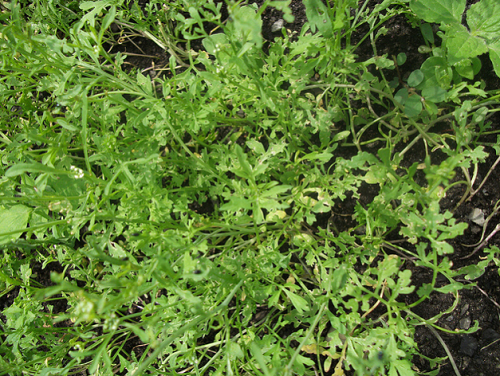
Growing technology
Sowing dates
Watercress is sown from the first days of spring - the plant is cold-resistant, tolerates unstable weather without loss. Delicate seedlings can withstand frosts down to -5 ° C. Podzimny sowing is possible.
Watercress is prone to overgrowth, the formation of a peduncle leads to coarsening of the leaves, the amount of nutrients in them decreases. Therefore, it is advisable to sow it several times per season with an interval of 10-15 days.
Starting from the second half of July and until mid-August, over-sowing is not performed: in the hot season, the plant almost immediately throws out a flower arrow, the greens grow sparse, dry, unpleasant in taste.
Site selection and preparation of beds
For beds for watercress, places are chosen with a light partial shade that lasts all day, in extreme cases, noon hours:
the plant does not like excess sun. On the contrary, in partial shade, the most delicious, tender, juicy leaves are obtained.
Remember!
You cannot plant watercress where representatives of the cruciferous family grew before it - cabbage, radish, turnip, etc.
The soil is prepared in the fall, the beds are dug up, freed from weeds, and humus is added. Depleted soil is ennobled with mineral fertilizers and organic matter per square meter:
- 15 g of potassium chloride;
- 30 g superphosphate;
- 4 kg of humus.
Immediately before sowing, the beds are fluffed and compost is added.
Sowing seeds
Usually, seeds are sown in rows, with a ribbon, or randomly. The depth of the holes or grooves is 1 cm. The soil above the seeds is slightly tamped. It is advisable to cover the March sowing with foil or agrofibre. The first shoots appear in 3-5 days.
Crops are thinned out when the third leaf is formed in the seedlings. The step between the plants is maintained at least 3 cm.If you want to get a large leaf rosette, the step is increased to 5 cm.
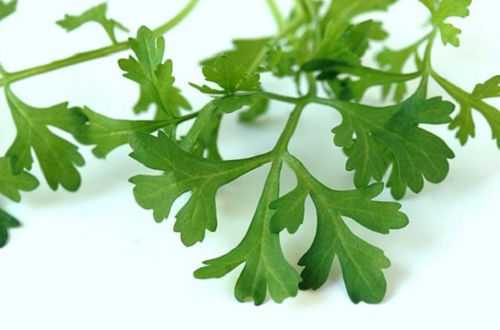
Watercress care
Watering
Watercress is moisture-loving, lack of moisture causes stress in him, and he is in a hurry to release a flower arrow. Therefore, it must be watered daily in sunny weather, and once every three days in cloudy weather. The plant responds gratefully to soulfulness.
To better retain moisture in the soil, as well as to prevent low-lying leaf rosettes from overgrowing with dirt, it is recommended to mulch watercress beds immediately after sowing the seeds.
Second thinning and other activities
The procedure is necessary for the leaf rosette to grow large. The seedlings are thinned out when the fifth leaf is formed, leaving a gap of 10 cm between them.
In the process of cultivation, weeds are regularly removed from the beds, the soil is loosened.
Note!
Feeding watercress is not worth it: the ripening period is short. The crops will have enough fertilizers applied in the fall.
How to collect seeds
Large, well-developed rosettes are left on the seeds. Dig them out of the ground when the leaf rosette begins to turn brown and hang them in a dry room with their flower heads down. To prevent the seeds from being lost, lay out paper or cloth.
Fully ripe and dried seeds are poured into bags made of natural fabric, stored in a cool dry place.

Watercress on the windowsill
A fast-growing and extremely unpretentious plant in winter, it is easy to grow at home on a windowsill. Winter plantings are only allowed to grow up to 5 cm in height, so the seedlings will not suffer from a lack of light, it will be comfortable on a cool windowsill.
You can take purchased soil as a substrate, but more often they do with paper towels and water, or just water.
On a note!
Watercress recipes don't mix well with other herbs
Young fresh watercress leaves are ideal for seasoning. They are added to cold appetizers, omelets, soups, sauces, gravies instead of horseradish.
Do not grind the greens, otherwise it will taste bitter, and the aroma will diminish.
Small leaves are decorative - they are used to decorate fish dishes. Canapes look especially beautiful with watercress.
For the future, the greens of the watercress are not dried - the greens lose their aroma and taste, and with them their useful qualities.
5. Watercress
A very decorative and miniature watercress, it does not at all deserve its botanical name "klopovnik sowing".Small leaves of this salad look great as a decoration for dishes, but watercress became famous first of all for its surprisingly sharp "mustard" taste of small beautiful leaves. Fast-growing, perishable, bright and aromatic watercress can even compete with arugula in its intensity of taste.
The use of watercress in cooking
Watercress is used only fresh. It goes well with fresh vegetables and sauces, snacks, omelets, fish and meat, and is used as a seasoning.
Klopovnik sowing, or Watercress
Sowing dates for watercress
The first sowing of cress is carried out at the end of March. It is advisable to constantly sow the cross for replacement plantings every 7-10 days. In the summer, it is better to take a break: in typical summer conditions in the middle lane, this type of salad rapidly turns to flowering, does not like long daylight hours and heat. Optimal conditions - germination at a temperature of about 6-8 ° C and growth at 10-15 ° - are achievable with sowing in spring and September.
The necessary conditions
For watercress, it is necessary to provide very nutritious and light soils. This type of salad does not like the bright sun, it gives the most delicious greens in partial shade (only the earliest sowing in March is best done in a sunny garden). This plant is considered one of the most cold-resistant salads.
Growing watercress
It is better to prepare the salad beds in the fall. The first sowing of cress is carried out in early spring, after warming up the soil. The seeds are buried in the soil up to 1 cm. Seedlings appear very quickly, after a few days. It is better to cover the first March sowing with a film or a film tunnel. After the release of the third true leaf, fragile crops must be thinned out, leaving only one plant at a distance of 10 cm.
Klopovnik sowing, or Watercress, young plants
The specifics of caring for watercress
Since the watercress is very low and grows in loose rosettes, it is best to mulch the soil to keep the foliage clean. Watercress will need regular watering, because interruptions in moisture instantly affect the taste of the leaves. Watercress simply loves spraying every day for juicier, more delicate greens. It is better not to use fertilizers.
Harvesting and storage
This is an early ripening salad that reaches technical maturity in 2-3 weeks after sowing (and its seeds ripen in two months). Even the plants remaining after thinning can be eaten. Harvesting can begin as soon as the watercress grows up to 10 cm.
Bedbug sowing, or Watercress, an adult plant
Watercress belongs to the most perishable types of salads: fresh watercress is stored for no more than a day, after which the leaves brighten due to the loss of chlorophyll and lose their taste. Even in the refrigerator, when the leaves are moistened, it can be stored for only 2-3 days.
The best varieties of watercress:
- "Dansky" is an early variety that reaches technical maturity already at 14 days with semi-raised rosettes, spicy and sharp, but delicate leaves;
- "Cupid", a mid-early variety, ripening for about 40 days with semi-raised rosettes reaching 20 cm in height and 30 cm in diameter with rosettes of very light, large, slightly fibrous and delicate, surprisingly fragrant leaves;
- "Vest" is a mid-early variety that ripens in a month with a higher rosette, reaching not only 40 cm in height, but also more than 60 cm in diameter.
